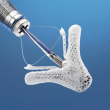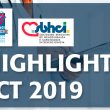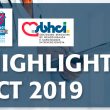Bedtime hypertensive therapy might reduce the risk of cardiovascular events according to this study soon to be published in Eur Heart J. However, despite showing significant risk reduction this hypothesis calls for further study before radically changing the usual upon awakening therapy. Taking the prescribed medication before bedtime could allow our bodies to naturally follow<a href="https://solaci.org/en/2019/11/04/what-is-the-best-time-to-take-antihypertensives/" title="Read more" >...</a>
Subintimal vs. Intraplaque Coronary Rechanneling. Do Results Vary?
Coronary rechanneling is difficult by nature, and there are several techniques for it aimed at improving technical success. Some of these strategies entail the subintimal crossing of the occluded segment, while others entail intraplaque crossing, without leaving the true lumen. However, there is scarce or no information on the results of both strategies. Researchers analyzed<a href="https://solaci.org/en/2019/10/31/subintimal-vs-intraplaque-coronary-rechanneling-do-results-vary/" title="Read more" >...</a>
Meta-Analysis of Large TAVR Studies on Low-Risk: Evidence is Consistent
This meta-analysis which included the 4 large randomized studies on transcatheter aortic valve replacement (TAVR) vs surgical aortic valve replacement (SAVR) in low-risk patients recently published in JACC, showed TAVR is associated with significant lower mortality compared against SAVR at one year follow up. These results add to the mounting evidence showing that when it<a href="https://solaci.org/en/2019/10/28/meta-analysis-of-large-tavr-studies-on-low-risk-evidence-is-consistent/" title="Read more" >...</a>
1000 MitraClips: Results from the World’s Most Experienced Site
In September 2008, interventional physicians at the Heart and Vascular Centre Hamburg conducted the first MitraClip implantation after its Conformité Européenne (CE)-marking approval. In July 2019, the same site reached an amazing milestone, 1000 MitraClips implanted, and in doing so it became the most experienced site in the world. Those 1000 patients treated had an average logistic<a href="https://solaci.org/en/2019/10/28/1000-mitraclips-results-from-the-worlds-most-experienced-site/" title="Read more" >...</a>
Trying to Reduce Post TAVR Kidney Injury
Acute kidney injury is a common complication after transcatheter aortic valve replacement (TAVR) and is associated to increased mortality both short and long-term. In patients undergoing percutaneous coronary intervention (PCI) forcing diuresis with controlled hydration has shown to reduce the incidence of acute kidney injury in nearly 50%. However, this has not been tested in<a href="https://solaci.org/en/2019/10/22/trying-to-reduce-post-tavr-kidney-injury/" title="Read more" >...</a>
The Most Read Scientific Articles in September at Solaci.org
1- ESC 2019 | New European Guidelines on “Chronic Coronary Syndromes” In Paris, during the European Society of Cardiology (ESC) Congress 2019 Scientific Sessions, new guidelines for the diagnosis and treatment of chronic coronary syndromes were presented. This document, simultaneously published in Euro Heart J, updates the 2013 guidelines on stable ischemic heart disease and<a href="https://solaci.org/en/2019/10/21/the-most-read-scientific-articles-in-september-at-solaci-org/" title="Read more" >...</a>
MIDAS Strategy: Minimizing Implantat Depth According to Membranous Septum
Permanent pacemaker implantation following transcatheter aortic valve replacement (TAVR) continues to be one of the most frequent complications. Even though its real impact on prognosis continues to be controversial, its impact on healthcare cost is out of the question, in addition to being uncomfortable for patients. This study, soon to be published in J Am<a href="https://solaci.org/en/2019/10/18/midas-strategy-minimizing-implantat-depth-according-to-membranous-septum/" title="Read more" >...</a>
TAVR Offers Better Quality of Life to Low Risk Patients
Courtesy of Dr. Carlos Fava. As we all know, TAVR is gaining ground fast in the lower risk patient population, but in addition to analyzing the most important events, researchers are increasingly looking at health status, not only at hospital level, but also after one year. This study looked into PARTNER 3 patient health status<a href="https://solaci.org/en/2019/10/16/tavr-offers-better-quality-of-life-to-low-risk-patients/" title="Read more" >...</a>
TCT 2019 | PCI in Stable CAD. Prior TAVR, with TAVR or Never?
Courtesy of SBHCI. This interesting study presented at TCT 2019 and simultaneously published in Am J Cardiol tells us PCI in stable coronary artery disease cannot lower risk in patients with severe aortic stenosis undergoing transcatheter aortic valve replacement (TAVR). Unless patients are symptomatic, most coronary artery lesions do not need revascularization according to researchers.<a href="https://solaci.org/en/2019/10/10/tct-2019-pci-in-stable-cad-prior-tavr-with-tavr-or-never/" title="Read more" >...</a>
TCT 2019 | FORZA: OCT vs FFR to Define Intermediate Lesions: Anatomy or Function?
Courtesy of SBHCI. Both fractional flow reserve (FFR) and optimal coherence tomography (OCT) can be useful to help define intermediate coronary lesions and optimize PCI outcomes. The FORZA study presented at San Francisco TCT 2019 scientific sessions simultaneously published in JACC randomized patients with intermediate lesions 1:1 to FFR vs OCT. For the FFR arm,<a href="https://solaci.org/en/2019/10/01/tct-2019-forza-oct-vs-ffr-to-define-intermediate-lesions-anatomy-or-function/" title="Read more" >...</a>









